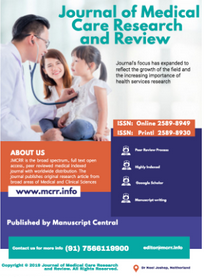The whole plant aqueous extract of Cleome rutidosperma (Cleomaceae) improves bone formation in ovariectomy-induced fragility fracture in rats
Abstract
Background: Osteoporosis is one of the major factors of bone microarchitecture alteration leading to an increase risk of fractures. The present study assesses the effect of the aqueous extract of Cleome rutidosperma (C. rutidosperma) on osteoporotic fractures. Methodology: Female rats were ovariectomized and 84 days after the development of osteoporosis, a hole was created in the femur. The ovariectomized-fractured group received distilled water (10 mL/kg); extract (75 mg/kg, 150 mg/kg or 300 mg/kg) or estradiol valerate (1mg/kg) orally for twenty-eight days and then the animals were sacrificed. Radiological (femur) and histological (femur fracture site and femoral head) analyses were performed. Biochemical parameters (calcium, phosphorus, and ALP activity) some oxidative stress parameters (malondialdehyde, reduced glutathione, catalase, and nitrite); TGF-β, TNF-α, and osteocalcin levels were evaluated. Phytochemical analysis was performed using LC/ESI-MS analysis.
Results: The ovariectomized-fractured rats showed a lipid profile altered (p<0.001), a reduction in bone mineral density; deterioration of bone formation markers accompanied by femoral head bone resorption with loose bone regeneration at the fracture site. The administration of the plant extract improved lipid profile and induced a significant increase in bone density with an improvement in ALP activity. In addition, the extract reduced oxidative stress by increasing GSH, nitrite concentrations, and catalase activity, while MDA levels decreased. The extract increased TGF-β (p<0.01-p<0.001), and osteocalcin (p<0.01-p<0.001) levels while TNFα decreased (p<0.001) with a marked effect at the dose of 75 mg/kg. At this dose, the extract showed the disappearance of the resorptive area in the femoral head with a more compact bone formation at the fracture site.
Conclusion: These results demonstrate the anti-osteoporotic and osteoregenerative properties of the aqueous extract of C. rutidosperma which could be partially due to the presence of Ursolic acid, phytol and Kaempferitrin detected in the extract.
Keywords: Osteoporosis, fracture, ovariectomy, histology, Cleome rutidosperma

